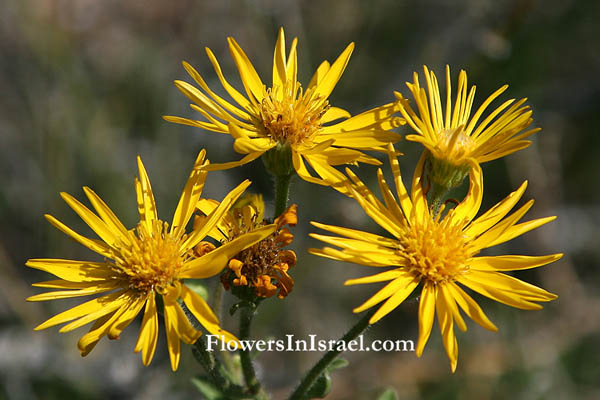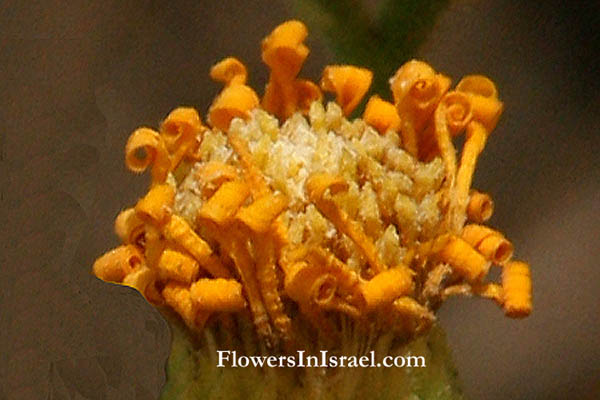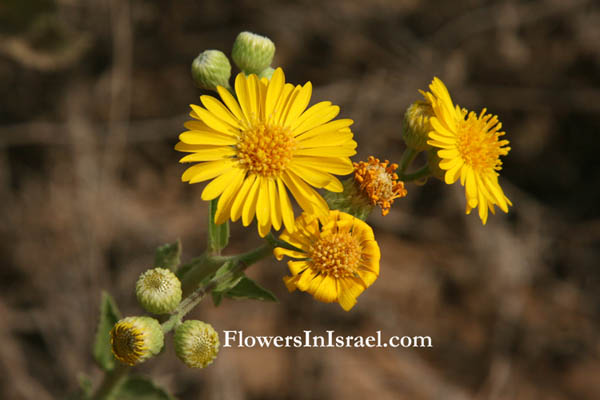Golden aster, Camphorweed,
Hebrew: הטרותיקת החולות, טיונית החולות, Arabic: طيون الرمال
| Scientific name: | Heterotheca subaxillaris (Lam.) Britton & Rusby | |
| Synonym name: | Inula subaxillaris Lam. | |
| Common name: | Golden aster, Camphorweed | |
| Hebrew name: | הטרותיקת החולות ,טיונית החולות | |
| Arabic name: | طيون الرمال | |
| Plant Family: | Compositae / Asteraceae, מורכבים |

|
| Life form: | Hemicryptophyte | |
| Stems: | 10–200 cm (aromatic); procumbent to erect, sparsely to densely hispido-strigose, sparsely to densely stipitate-glandular | |
| Leaves: | Alternate, entire | |
| Inflorescence: | Terminal; a corymbose panicle (more or less flat topped), sometimes broad | |
| Flowers: | Yellow flowers in composite heads having both ray and discflowers | |
| Fruits / pods: | Dimorphic cypselae | |
| Flowering Period: | January, February, September, October, November, December | |
| Habitat: | Sand | |
| Distribution: | Mediterranean Woodlands and Shrublands, Semi-steppe shrublands | |
| Chorotype: | American | |
| Summer shedding: | Ephemeral |

Derivation of the botanical name: Heterotheca, ετεροϛ, hetero, different; -theca, ovary; from the unlike achenes of the ray and disk florets. subaxillaris, Open air aroma, emit low aromas, camphor. inula, from Helen of Troy, being fabled to have sprung up from the ground where her tears were supposed to have fallen. The Hebrew name: הטרותיקת, Heterotheca, transliteration from the scientific name.


|